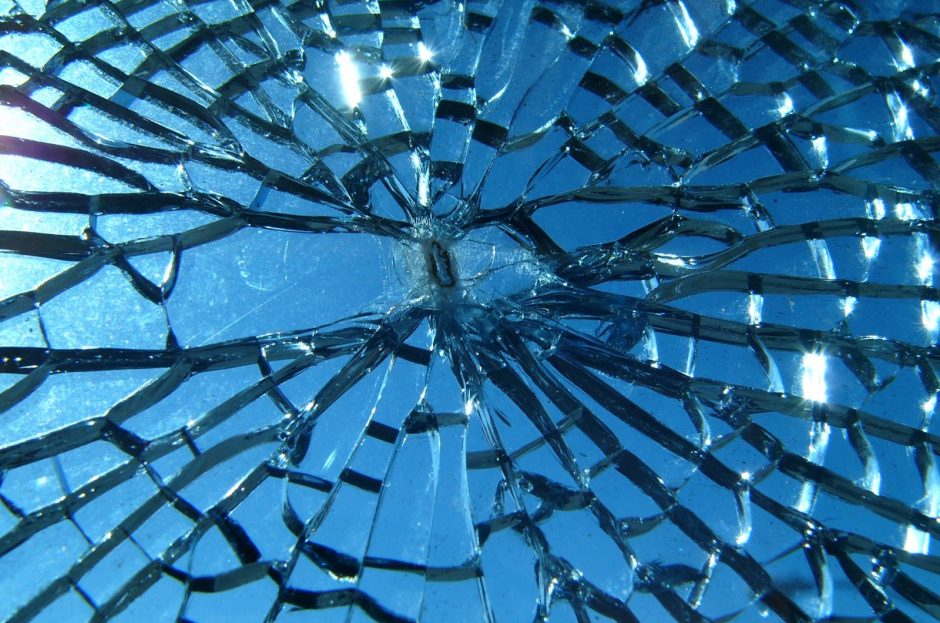
You’ve selected your display or kiosk. Now you need to pick the glazing to contain your items. But there seem to be so many options. How can you break away from the confusion and make the best choice?
There are two main categories of glazing: plastics and glass. What’s best? It depends on the project, the place, and the budget.
Plastics
Plastics are a main group of glazing material known as polymers—formed by chemical reactions in molecules that join them, like in a chain. What’s so great about those joined polymer? They have some unique strengths.
There are two types of plastics to choose from—acrylic or polycarbonate—each with its own advantages and disadvantages.
Acrylic
Clear acrylic glazing has several benefits.
- Acrylic is light weight, being less than half the density of glass. So, transportation and assembly of acrylic is easier and often less expensive than with glass.
- Acrylic is strong
Acrylic has a higher tensile strength and impact resistance and is 17 percent stronger than glass.
- Acrylic transmits light—transmitting up to 92 per cent of visible light and providing a cleaner visibility of display items.
Acrylic is used successfully indoors or at a location where there’s little risk for theft and tampering. It’s available in a number of thicknesses and can be an economical selection for glazing in any safe environment. It doesn’t have as much of a tendency to yellow as polycarbonate and it’s less expensive than polycarbonate.
But, acrylic has some negatives.
- It’s susceptible to bowing due to thermal changes or wind load.
- It can develop a static charge meaning that small pieces of dust or debris may collect on it.
- If acrylic is used outdoors in extreme conditions and in an south/west exposure to the sun, it can develop sunburst and swirls which impact optical quality.
- It can be easily scratched or damaged with improper cleaning. However, minor blemishes can be removed from acrylic by polishing, whereas similar blemishes would necessitate replacement of the glass.
Polycarbonate
Polycarbonates are a type of thermoplastic polymers that contain carbon groups to give them extra strength. Simply put, it makes them the super heroes of glazing. The best features of polycarbonate are:
- Temperature resistance
- Impact resistance
Polycarbonates are impervious to extreme temperatures. Polycarbonates can withstand being hit by a baseball bat and are even bullet resistant. With their superior impact resistance, this is the glaze of choice in outdoor applications where vandalism is likely. You’ll find polycarbonates at bus shelters, parks, and outdoor displays in rougher neighborhoods.
But the protection it offers comes with a loss of other qualities. Polycarbonates scores low for:
- Abrasion and scratch resistance. Though a scratch abrasion resistant (SAR) polycarbonate is available, it’s nearly double the expense of regular polycarbonate.
- Cost—it is more expensive than acrylic and most glass options.
- Optical quality is not as good as with acrylic because it diffuses light and has more yellowing than acrylic over time.
Special coatings are available on polycarbonates. One, used in some cities, is to have additional layers of plastics on the glazing that can be peeled off one layer at a time if defaced or scratches develop. Polycarbnate is also available treated with UV inhibitors to be used in public outdoor applications such as parks, forest preserves and downtown areas. Unfortunately, the treatment may cause yellowing and cloudiness over time, particularly if the display unit has a Southern or Western exposure.
Glass Types
Basic double strength glass is used in displays and is twice as thick as picture glass. It’s used most often for indoor applications, especially those that involve areas less than 9 square feet. Anything larger tempered glass is often used. Double strength glass has two main drawbacks: it’s more than twice as heavy as acrylic, and it’s easily shattered into large, dangerous shards.
Double strength is not is not recommended for outdoor use, or any environment where tampering, theft, or safety is a concern.
Tempered glass
Tempered glass is treated by a thermal process to strengthen it. The process rearranges the molecules and renders it 5 times stronger than double strength glass. When it’s broken, it crumbles into small, ¼ inch granular chunks rather than sharp shards. However, the tempering process adds to the square foot cost.
Tempered glass is used in outdoor applications where vandalism might not be an issue and for indoor applications at courthouses, schools, hospitals and government buildings.
Cleaning
The correct cleaning has to be matched with your specific glazing. If not, it will be damaged, resulting in a short life span.
- Plastics can not be cleaned with any product containing ammonia (such as Windex or glass cleaners) or the glazing will develop a “frosted” look over time.
- Use the correct cleaning products such as: vinegar and water, mild dish soap with water, or a specialty cleaning product for acrylics such as Novus No. 1 or Brillianize.
- Do not use paper towels, but use chamois, a microfiber cloth or a cellulose sponge.
- Glass can be cleaned with ammonia products and paper towels but some other solutions are recommended as well (glass cleaner diluted with distilled water, vinegar and distilled water in equal portions, use a microfiber cloth or squeegee instead of paper towels)
When you know your glazing options, and weigh those with what you’ll require for your location, selection is not so difficult.





